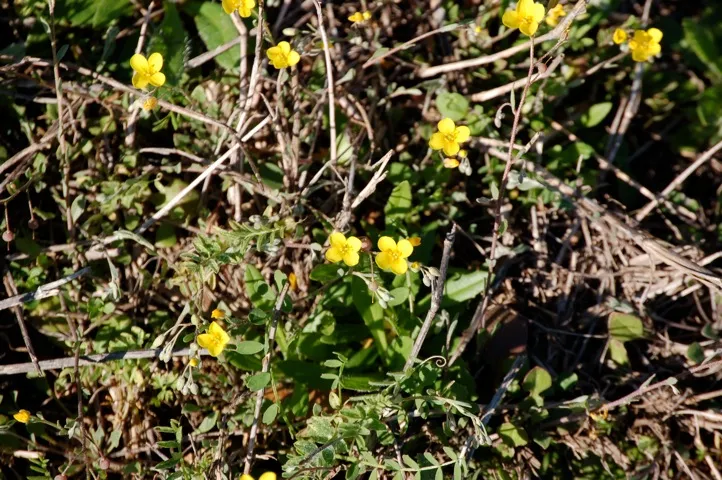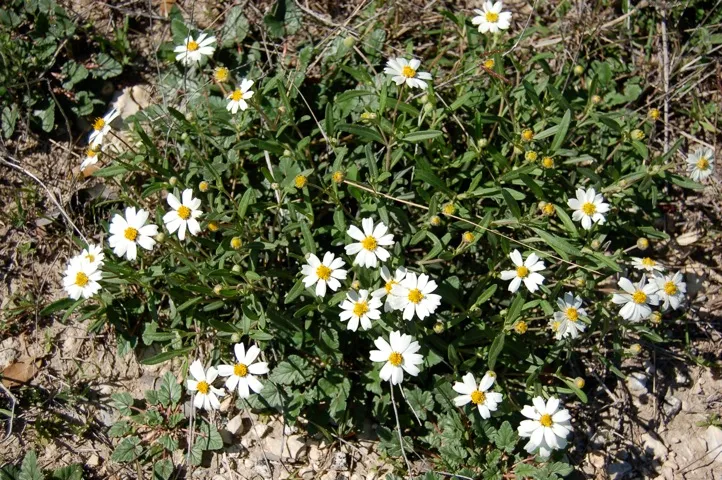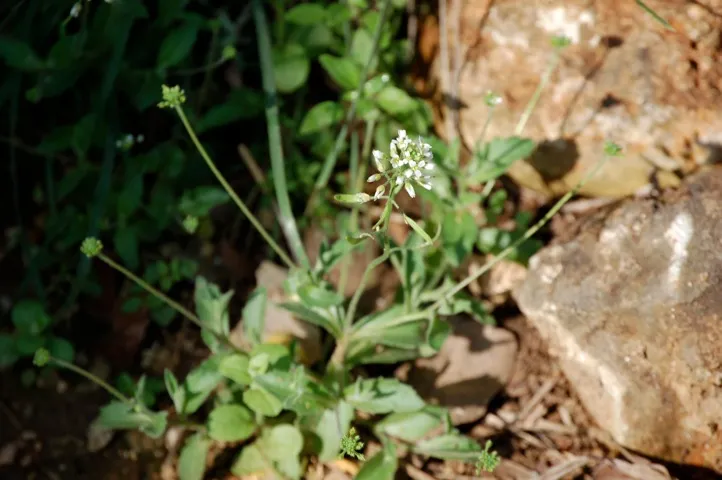By Delmar Cain
It could still freeze but this warm weather really feels like spring. Kip Kiphart has been sending pictures of small blooming plants and thinks that just because I stayed in a Holiday Inn once that I should be able to identify them. Of course he is wrong. Leave it to a retired cardiac surgeon to come up with something in the bladderpod family or a grass that looks nothing like a grass. Patty Pasztor, a real naturalist, will have to handle this job.

In addition to making us think spring, the month of March in 2012 also marks a milestone for the Boerne Chapter of the Native Plant Society of Texas. Ten years ago Bill Ward and Rebecca Rogers had the bright idea to start a program they called “NICE”, an acronym for “natives instead of common exotics.”
The purpose of the program was to convey the importance of planting Texas and Hill Country native plants that perform at least as well and many times better than the many exotic nonnative plants which have a way of starting out in your neighbor’s yard but end up claiming half of the county—think kudzu.
Suzanne Young remembered that the first Plant of the Month was the mountain laurel (Sophora secundiflora), which was to be highlighted at the Mostly Native Plant Sale in April of 2002. Unfortunately, she recalled, “our star plant fizzled due to a March freeze that wiped out the blooms of all the mountain laurels.” But the program didn’t fizzle—it sizzled.
Suzanne noted that the group that “worked on getting this idea off the ground, deciding on a logo, PR, workshops, and creating those NICE! T-shirts” generated many “fond and funny memories”. And that was not the only benefit. The NICE program, later adopted by the State NPSOT and several other chapters, was one of the reasons that the Boerne Chapter was selected Chapter of the Year for 2002.

This is a different year and the NICE Plant of the Month for March is not likely to suffer, even if the temperature does fall below the freezing mark. The blackfoot daisy or plains blackfoot (Melampodium leucanthum) grows natively north into Oklahoma, Kansas and eastern Colorado. Obviously it can take the cold since the temperature in those areas can reach down to –5 to –10 degrees F according to the USDA Hardiness Zone map.
However, the real reason for selecting the blackfoot daisy is because it is a plant that performs well with consistent blooms from April to October, even in dry conditions. Blackfoot daisy is a low growing perennial, which is normally wider than tall. It seldom reaches more than 12 inches tall except under very favorable conditions. It is found in rocky gravelly soils, including the caliche and limestone based soils of our area. It is not unusual to see it growing along the right of way along our county roads.
This low-mounded bushy plant has white daisy-like flowers that have a yellow center. Each solitary flower is found at the end of a slender stalk. The flowers are honey-scented and are attractive to bees, butterflies and other nectar-sipping insects.

On many lists blackfoot daisy is placed in the “high” category on deer resistant. I planted a blackfoot daisy in the crushed granite of a rock terrace. The crushed granite was laid over caliche base. The plant was happy in the spot, but the deer did not find it “highly” resistant. They browsed it every year although the plant always managed to put up a few flowers. Finally it did not come back but another sprouted from the seeds a short distance away. My advice is to protect it from deer if you can, especially if you have the plant in an area that gets abundant water.
The Wildflower Center suggests that the plant may have a longer lifespan if it does not get abundant water and if the soil is not overly rich. It probably gets neither when it grows in the wild. Less water may also be the reason that it is less palatable to deer in the wild. There is no question that the deer at my house are not picky eaters. They even eat the mountain laurel leaves, which are supposed to be poisonous. Still for NICE plants, you can’t do much better in our area than blackfoot daisy and mountain laurel.
To see all the NICE recommendations for the last ten years and for detailed planting instructions on the blackfoot daisy, check the Boerne NPSOT website: http://www.npsot.org/wp/boerne/


